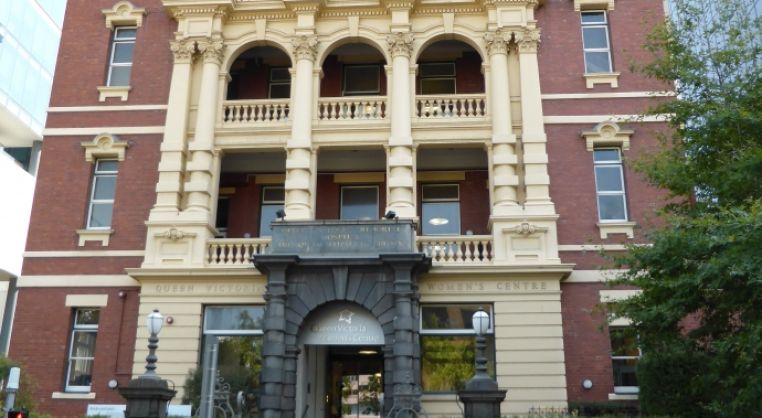Stop 6 is Melbourne Hospital
During WW1, Melbourne Hospital acted as the Military Base Hospital, and along with many other hospitals, served as both training centres for nurses and repatriation hospitals for wounded returned servicemen.
The next stop is the Royal Exhibition Building and Carlton Gardens. Along the way, check some of the stories at ‘red’ Russell Street.
TRANSCRIPT
“While men fight one another, women tend the wounded, and there can be no doubt at all that theirs is the nobler part. Naturally enough the eyes of the world are on the firing line and sometimes the work of the nurses, from the very firing line to the hospitals is overlooked. It was ever thus. Those who scar the tree of life, a great thinker once said, are remembered by the scars, but those who water its roots have nothing by which they may be known. But theirs is the tree.”
During WW1, Melbourne Hospital acted as the Military Base Hospital, and along with many other hospitals, served as both training centres for nurses and repatriation hospitals for wounded returned servicemen.
This remaining building of the Queen Victoria Women’s Hospital is also the sole surviving remnant of the earlier Melbourne Hospital. It was opened in 1848 and after being largely rebuilt in 1913 covered all this city block.
The Royal Melbourne Hospital, as it was renamed, remained here until 1944 when it moved to its present site in Parkville. The buildings were then taken over by the Queen Victoria Women’s Hospital.
In response to the call for 100 doctors to come to Europe, known as Kitchener’s 100, many doctors, nurses, medical staff and even medical students enlisted, leaving the hospital sadly depleted in many critical positions.
Consequently, the hospital was under severe stress, but thankfully the Red Cross auxiliaries came in to assist providing food, linen, bed gowns, theatre gowns, bandages and general support.
Nursing duties and routines were difficult.
“We were called for duty at 5.30am and on duty at 6.00am. Breakfast at 7.30 and 8.00am We were given 20 minutes later for ‘tidy’ – to make our beds and change our aprons … If we were on night duty or a day off we had to get up and come in for lectures.”
During the war, badly wounded soldiers arrived in Melbourne from the hospital ships. A whole system of repatriation hospitals were established in Melbourne including the Caulfield Repatriation Hospital, Bundoora Repatriation Hospital and No1 Rest Home at Wirth’s Park, now the site of the Victorian Arts Centre.
But the wounds were not limited to physical ailments. Many returned soldiers came back as ‘changed men’ suffering the dreadful consequences of the war such as shell shock. Some required permanent care in institutions and hospitals but the majority suffered their wounds at home cared for by their struggling families.
Many blind boys were in the wards and it was a novel experience for Sister Sheehan and myself to take them to the movies and afterwards to tea at the Mia Mia café. We had to describe the pictures to them, they enjoyed the music and their tea. We had to be back at 6pm. The boys will remember the many musicians who came to cheer them up, especially the old ladies with the auto-harp. The Red Cross supplied comforts and how the boys enjoyed the hot soup and dainties – but even that did not compensate for the loss of limbs, health and careers yet they bore their pain and confinement to bed as cheerily as they did all other hardships at the battlefront.”
“Most of the boys found a grave in France, but some of them returned home, for as I passed through the Heads of Port Phillip Bay on my return, I received a wireless message from Queenscliffe ‘Welcome Home Sister’ from one of the Siege Brigade. And when I go west and step over the borderland of this life, I know some of the Deathless Army, I will get a ‘Welcome Home Sister’.”
The next stop is the Royal Exhibition Building and Carlton Gardens. Along the way, check some of the stories at ‘red’ Russell Street.


